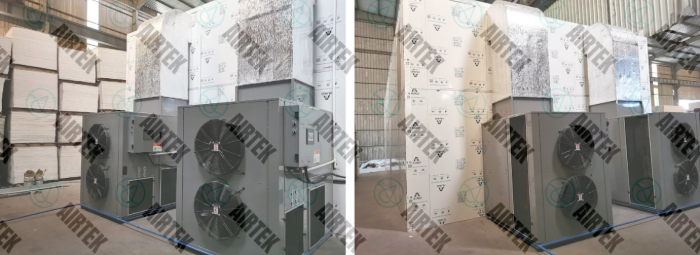Drying wood isn’t just part of the process of preparing the timber. It’s one of the most fragile steps, and it has the power to quietly ruin everything you’ve done up to that point. You spend weeks harvesting, cutting, stacking, and one uneven drying cycle later, half the load has been warped, cracked, or just not up to the required spec.
Sometimes, the damage isn’t even apparent right away. That’s the trickiest part.
This is where having the right wood drying machine starts to make a lot of sense, not just in terms of convenience, but in actual, measurable savings. Cost, time, quality—every part of the operation starts to tighten up.
The hidden price of doing it the old way
Plenty of people still rely on old kilns or even outdoor seasoning to dry wood. It works—technically. But the expenses don’t always show up on the surface.
You burn through fuel, lose weeks to slow drying, and end up sorting through stacks of unusable boards. Some end up in the scrap pile. Some make it to a buyer and come back later with complaints.
And then there’s space. Huge setups are taking over the floor, limiting how much product you can run at once.
This isn’t to criticize traditional methods. They’re familiar, and they’ve served people well for years. But when you actually run the numbers—energy usage, drying time, labor hours, returns—it’s usually not as “cheap” as it seems.
Drying machines offer more control. That matters.
Wood isn’t consistent. Even two boards from the same tree might behave differently in the drying chamber. You might see one cup, the other crack, and have no idea why.
That’s why people who work with wood talk about having control more than anything. Temperature, humidity, timing—when those variables are locked in, the results get better. It’s not perfect, but noticeably more reliable.
One guy who runs a medium-sized mill said he used to lose 15% of his product to drying issues. After upgrading his system, it dropped to 4%. He didn’t change much else—same lumber, same crew. Just better control.
And honestly, when the equipment’s doing most of the thinking, it takes a load off the team. Fewer mistakes. Less babysitting. That kind of thing adds up.
More room to breathe
Some of the older kilns or drying barns are monsters. They take up more space than the sawmill itself. And once they’re in, they’re not moving. Ever.
Modern machines? A lot more compact. You don’t need to plan your facility around them. You just plug them in and go. Well, after setup, of course, but you get the point.
And with shorter drying cycles, you can rotate products faster, which means you’re not waiting weeks before you can start the next batch. That’s time saved. Orders are filled sooner. Fewer headaches when a client moves a deadline up at the last minute.
Better quality brings better returns.
It’s not just about keeping wood from going bad. It’s about producing something buyers trust. If your wood looks cleaner, holds its shape, and performs better when it’s worked on, people notice.
They might not tell you. But they’ll keep ordering.
On the other hand, when lumber comes out blotchy, cupped, or full of microcracks, it’s hard to get top dollar. You might still sell it, but not at the price you wanted. And you might not see that buyer again.
There’s no exact formula for “quality,” but drying plays a significant role in it. Arguably the biggest one.
Is it worth the switch?
That depends on how severe drying is in your operation.
Suppose it’s something you do once in a while, maybe not. But if you’re running wood regularly, and drying is a core part of your business, a better machine usually pays for itself faster than expected.
- Less waste
- Fewer returns
- Tighter moisture control
- Lower utility bills
- Higher throughput
And it gives you peace of mind. Which, let’s be honest, is hard to price.
It also frees up time. When drying is consistent and reliable, you’re not constantly checking gauges or second-guessing batches. Your team spends less time managing problems and more time moving products. That alone can improve output without hiring anyone new.
Then there’s consistency, not just in the wood, but in your operation. No more rushing to meet deadlines because a batch took longer than expected. No more explaining to clients why the moisture levels were off again. That kind of stability isn’t flashy, but it matters.
Customers notice it, too. You send out better material, and they trust you more. And when they trust you, they stop shopping around.
So while a better drying machine might not be the cheapest upgrade, it could be the one that actually changes how you run your business. Quietly. Permanently.
Wrapping it up
There’s no perfect system. Every setup has tradeoffs.
But for people who deal with wood at scale, drying isn’t the place to cut corners. An intelligent, well-calibrated machine doesn’t just make the job easier. It protects your investment—every log, every board, every hour.
If you’re still guessing your way through drying cycles, maybe it’s time to stop thinking and act decisively.

